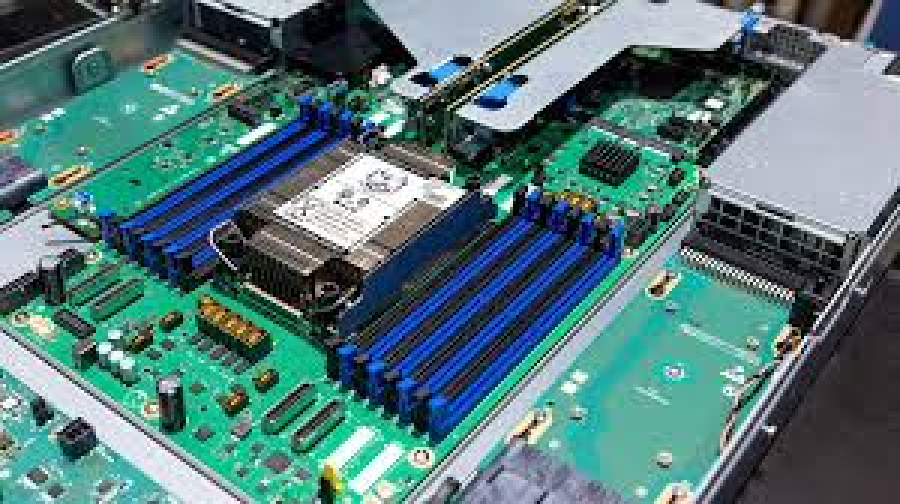How to Integrate Blockchain Technology into Web Applications
Blockchain technology is revolutionizing the way data is stored, shared, and secured on the internet. As a freelancer or developer on FreelancerBridge, understanding how to integrate blockchain into web applications is essential to meet the growing demand for decentralized, transparent, and tamper-proof solutions. This guide explores the fundamentals and practical steps to incorporate blockchain technology into your web projects, unlocking new opportunities for secure, innovative, and trustless web applications in 2025 and beyond.
Long Description (1000+ words)
How to Integrate Blockchain Technology into Web Applications
The rapid adoption of blockchain technology has changed the landscape of web development by introducing decentralized architectures that improve security, transparency, and user control over data. As more industries leverage blockchain for everything from finance to supply chains, freelancers on FreelancerBridge have a unique opportunity to build web applications that incorporate this transformative technology.
This comprehensive guide breaks down how to successfully integrate blockchain into your web apps, covering the core concepts, tools, and practical implementation strategies.
1. Understanding Blockchain Basics
Before diving into integration, it’s crucial to understand what blockchain is:
Decentralized ledger: Unlike traditional databases, blockchain stores data across a network of computers (nodes), making it resistant to censorship and single points of failure.
Immutable records: Once recorded, data on the blockchain cannot be altered or deleted, ensuring data integrity.
Consensus mechanisms: Blockchain relies on algorithms like Proof of Work (PoW) or Proof of Stake (PoS) to validate transactions securely.
These properties make blockchain ideal for applications requiring trust, auditability, and security.
2. Choose the Right Blockchain Platform
Several blockchain platforms support web integration. Selecting the right one depends on your app’s needs:
Ethereum: Popular for smart contracts and decentralized applications (dApps).
Binance Smart Chain (BSC): Lower fees and fast transactions.
Polygon (Matic): Layer 2 scaling for Ethereum with reduced costs.
Hyperledger Fabric: Permissioned blockchain for enterprise applications.
Understanding platform features, scalability, costs, and community support helps you choose the best blockchain for your project.
3. Key Components for Integration
To integrate blockchain into a web app, you need to combine traditional web development with blockchain components:
Smart Contracts: Self-executing code deployed on the blockchain that defines the app’s business logic.
Web3 Libraries: Tools like Web3.js or Ethers.js enable communication between your web app and blockchain nodes.
Wallet Integration: Connect users’ crypto wallets (e.g., MetaMask) for authentication and transaction signing.
Backend and APIs: Sometimes required for off-chain data storage, indexing, or interacting with external services.
4. Step-by-Step Integration Process
Step 1: Develop Smart Contracts
Write smart contracts in Solidity (Ethereum) or relevant languages for your blockchain platform. Test them thoroughly using frameworks like Truffle or Hardhat.
Step 2: Deploy Smart Contracts
Deploy contracts to a testnet (e.g., Ropsten, Mumbai) for testing, then to the mainnet when ready.
Step 3: Set Up Web3 Provider
Use Web3.js or Ethers.js in your web app to connect to the blockchain via a provider like Infura or Alchemy.
Step 4: Connect Wallets
Implement wallet connection functionality so users can interact with your dApp securely.
Step 5: Build Frontend Interfaces
Create user interfaces that interact with smart contracts — for transactions, displaying data, or executing functions.
Step 6: Handle Blockchain Events
Subscribe to blockchain events to update UI in real-time or trigger actions based on contract state changes.
5. Practical Use Cases
Blockchain integration in web apps unlocks a variety of applications:
Decentralized Finance (DeFi): Lending, borrowing, and trading platforms without intermediaries.
Supply Chain Tracking: Transparent product histories from origin to consumer.
Digital Identity: User-controlled identity management systems.
NFT Marketplaces: Buying, selling, and managing non-fungible tokens.
Voting Systems: Secure and tamper-proof election platforms.
These use cases demonstrate blockchain’s versatility in enhancing web app functionality.
6. Challenges and Considerations
While blockchain offers many advantages, integration comes with challenges freelancers must navigate:
Scalability: Public blockchains can have slower transaction speeds and higher costs. Layer 2 solutions may help.
User Experience: Wallet setup and blockchain transactions can confuse non-technical users — UI/UX design is critical.
Security: Smart contracts are immutable; bugs can lead to irreversible issues. Audit code carefully.
Regulatory Compliance: Understand legal implications, especially around cryptocurrencies and data privacy.
Awareness of these challenges helps build robust, compliant blockchain web apps.
7. Tools and Resources for Freelancers
To streamline blockchain integration, freelancers can leverage these resources:
Truffle Suite / Hardhat: Smart contract development and testing frameworks.
Web3.js / Ethers.js: JavaScript libraries for blockchain interactions.
MetaMask: Popular crypto wallet for user authentication.
The Graph: Decentralized indexing protocol to query blockchain data efficiently.
OpenZeppelin: Secure smart contract libraries and standards.
Using these tools accelerates development and reduces errors.
8. Why Freelancers on FreelancerBridge Should Learn Blockchain Integration
As blockchain adoption grows, clients increasingly seek developers who can build secure and scalable decentralized web apps. By mastering blockchain integration, freelancers can:
Access new project categories with higher value and innovation
Differentiate their skills in a competitive freelancing market
Provide end-to-end solutions combining blockchain and web technologies
Contribute to cutting-edge projects in finance, supply chain, gaming, and more
This expertise positions freelancers on FreelancerBridge as future-ready professionals.
Conclusion
Integrating blockchain technology into web applications is no longer a futuristic idea; it is a present-day reality shaping the future of the internet. By understanding blockchain fundamentals, selecting the right platform, and leveraging the right tools, freelancers on FreelancerBridge can build secure, transparent, and high-performing web apps that stand out.


 by Emily
by Emily




